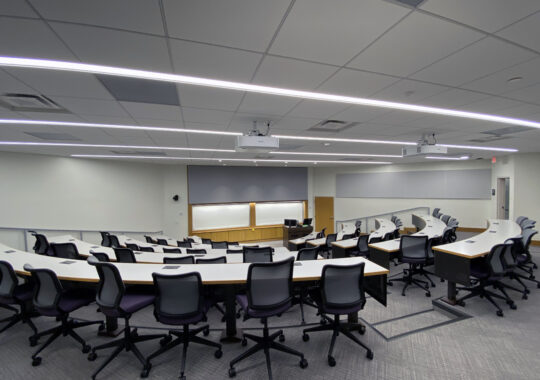
Acoustics, the study of sound and its behavior in various environments, plays a crucial role in the field of education. The way in which sound is transmitted, reflected, absorbed, and diffused in educational settings can significantly impact learning outcomes for students. From classrooms to lecture halls, proper acoustic design can enhance communication, concentration, and overall academic performance. Let's explore the key factors that make acoustics a vital aspect of creating conducive learning environments.
The Impact of Acoustics on Learning
Importance of Acoustics in Educational Settings:
- Clarity of speech: Clear auditory communication is essential for effective teaching and learning.
- Reduced distractions: Proper sound control can minimize background noise and distractions in the learning environment.
- Improved concentration: Optimal acoustics can help students focus better on the learning tasks at hand.
The Role of Acoustics in Different Learning Spaces:
- Classrooms: Proper acoustics in classrooms can enhance teacher-student interaction and student-student communication.
- Lecture halls: Good acoustic design in lecture halls is crucial for ensuring that all students can hear and comprehend the lecture material.
- Libraries: Quiet study areas in libraries require effective acoustics to maintain a conducive environment for concentration.
Factors Affecting Acoustic Quality
Building Design and Materials:
- Room shape: The shape of a room can impact sound reflection and reverberation times.
- Wall materials: Absorptive materials like acoustic panels can help reduce sound reflections and improve clarity.
- Furniture placement: Proper arrangement of furniture can help control sound diffusion and absorption in a space.
Technological Innovations:
- Sound masking systems: These systems can help reduce background noise and improve speech privacy in open-plan spaces.
- Acoustic panels: Decorative panels that absorb sound can be used to enhance the acoustic environment without compromising aesthetics.
- Microphone systems: Amplification systems with microphones can help ensure that speakers are heard clearly in large spaces.
Best Practices for Improving Acoustic Environments
Acoustic Treatment:
- Installation of acoustic panels on walls and ceilings to reduce reverberation and improve speech intelligibility.
- Use of carpets, curtains, and other soft materials to absorb sound and minimize noise levels.
- Placement of sound-absorbing materials strategically around the room to create a balanced sound environment.
Proper Maintenance:
- Regular inspection of acoustic elements to ensure they are functioning effectively.
- Cleaning and dusting of acoustic materials to prevent buildup that can reduce their effectiveness.
- Replacement of worn-out or damaged acoustic components to maintain optimal sound quality.
Conclusion
Acoustics plays a vital role in creating conducive learning environments that foster effective communication, concentration, and academic performance. By understanding the impact of sound in educational settings and implementing appropriate acoustical design principles, schools and institutions can optimize the learning experience for students and educators alike. Investing in acoustics is not just about improving sound quality; it's about enhancing the overall educational experience and setting the stage for success.
